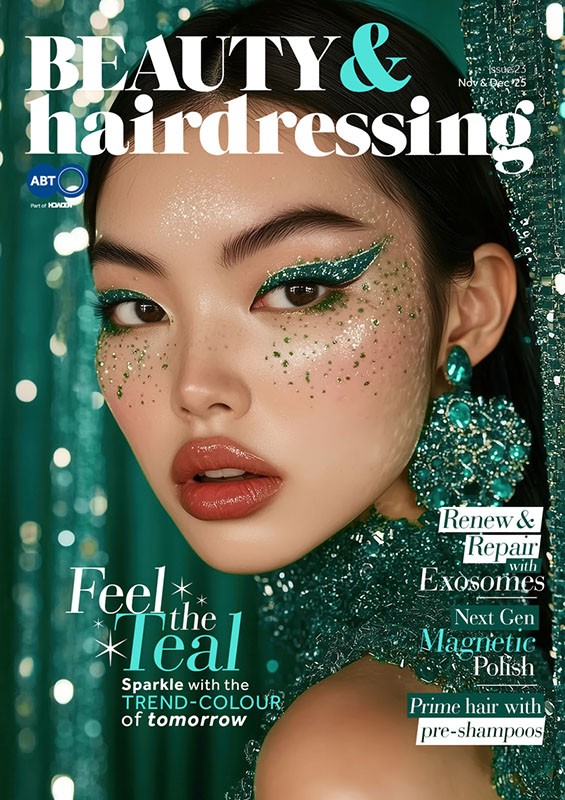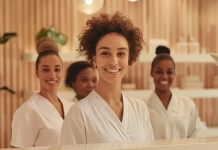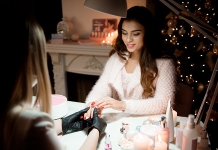Expert advice: Maintaining your PPE to ensure your clients & staff are safe
PPE expert Kelly Friel shares her insight on how to maintain your Personal Protective Equipment in your hair or beauty business.
Please note, that as guidelines are being updating frequently, you should always check the government COVID-19 advice hub for close contact services before implementing any changes.
-6970.jpeg) After months in limbo, it's fantastic that stylists and beauty therapists can finally get back to work (subject to some limitations) and bring some much-needed revenue to salons across the country. But, the ‘new normal' does present salon owners with a number of challenges when it comes to ensuring that all staff and clients stay safe, especially as hairdressing and other beauty services are one of the few industry's where prolonged close contact is unavoidable.
After months in limbo, it's fantastic that stylists and beauty therapists can finally get back to work (subject to some limitations) and bring some much-needed revenue to salons across the country. But, the ‘new normal' does present salon owners with a number of challenges when it comes to ensuring that all staff and clients stay safe, especially as hairdressing and other beauty services are one of the few industry's where prolonged close contact is unavoidable.
As a result, it's absolutely crucial to ensure you have the proper personal protective equipment (PPE) on hand to reduce and control the virus as per the government guidelines. In this post, I've shared my tips for keeping your PPE in great condition and using it safely, so you can pass this information onto your staff and keep everyone safe.
Make sure you have the right equipment
First, you'll have to identify which types of PPE are most suitable for your business type and the services you offer. The Government has issued guidelines specifically for close contact services, like hair, nail and beauty salons. The key recommendation is that hair stylists should wear facial visors that provide complete protection for the entire face. For work on the hands - like manicures - a screen can be used instead, although a surgical mask is still a prudent addition for this work.

Clean PPE properly after every shift
Reusable PPE must be cleaned or disinfected after every shift to remove any potentially contagion. Plastic PPE, such as face visors and eyeglasses, should be rinsed using warm water and mild dish soap and dried with a soft cloth. You can then disinfect them using an antibacterial spray or wipes to remove any lingering contaminants. Washable cloth masks can be laundered, preferably with an antibacterial detergent.
Staff should also wear PPE during the cleaning process to protect from any splashes, and should wash their hands afterwards, as well.
Inspect & replace PPE as needed
PPE will only provide sufficient protection if it's in a good state of repair. So, it's important that staff take the time to check their PPE for faults or damage before they put it on. If they notice a problem that means the PPE isn't providing complete protection, then they should remove it and wear a replacement, instead. PPE that cannot be repaired should be disposed of as we've outlined below.
Store or dispose of PPE safely
After your PPE has been cleaned, you'll need to store it in a sanitary location where it won't be exposed to potential sources of contamination. That means you'll want to keep it somewhere well away from both staff and customer-facing areas; a locker or other sealed storage unit can be used if you're low on space. The storage area should also be disinfected regularly, to further reduce the risk of cross-contamination.
If you need to dispose of your PPE, then you should always follow the
government's official guidelines for doing so safely. This may involve adding additional bins to your premises (preferably with lids to reduce the chances of contaminants escaping), as well as taking steps to ensure that they can be safely collected. For example, you may need to leave any used or broken PPE in sealed bag in a safe area for at least 72 hours before disposing of it, as this will provide enough time for the COVID-19 pathogen to die.
Your PPE can go a long way towards keeping your staff and customers safe, but only if you're taking the necessary steps to keep it in good condition. Be sure to follow the advice I've shared here to ensure it's up to standard, and remember that you can always check the
government PPE advice hub if you're ever unsure about anything.
Kelly Friel is Digital Product Manager at tool and PPE supplier Zoro.








